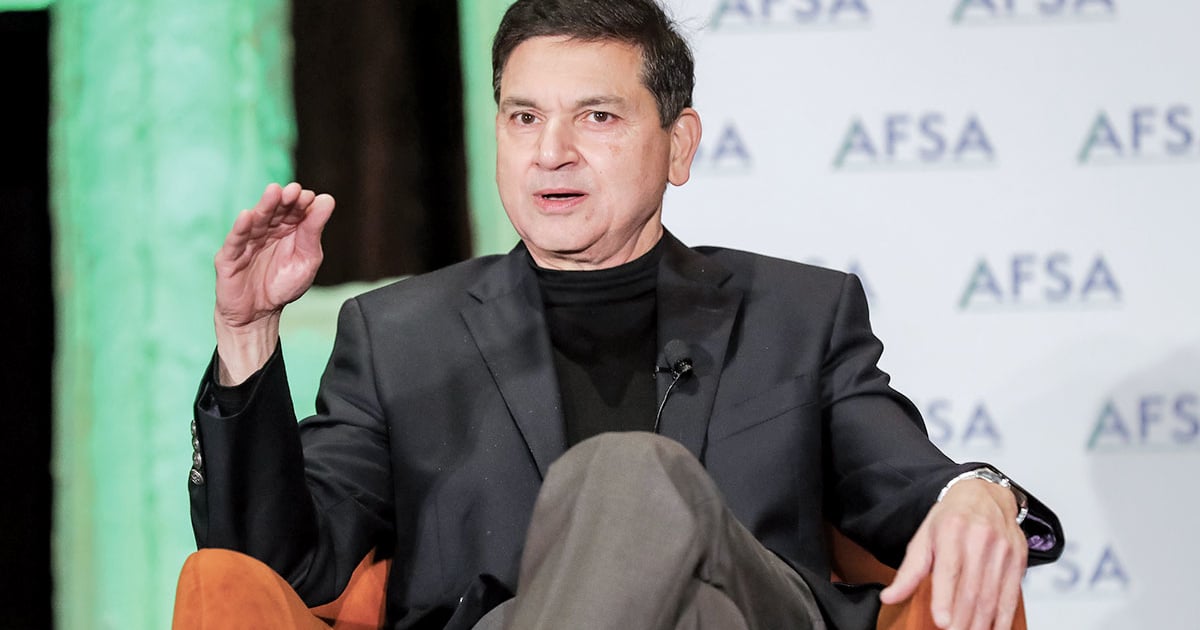
Customers and auto dealers continue to be miles apart in their perceptions of transparency in the car buying process, according to Capital One.
Only 21 percent of consumers called car shopping very or fully transparent, compared with 68 percent of dealership owners and staffers surveyed, the 2023 Capital One Car Buying Outlook study reported.
“For the right dealerships, this is a huge area of opportunity,” Sanjiv Yajnik, president of financial services at Capital One, said at a Jan. 18 webinar discussing the study results.
Capital One called the perception gap between the groups similar to that a year earlier, when 26 percent of buyers and 77 percent of dealers called car buying significantly transparent.
“It’s a very, very simple thing,” Yajnik told Automotive News during the American Financial Services Vehicle Finance Conference on Jan. 26. “The customer lives in a different world than the dealer.”
A customer visiting a site like Amazon can see products and prices and know the exact cost, he said.
In the retail world, “everything is transparent,” he said.
But in auto retail, buying a vehicle is more complicated. The customer’s cost depends on factors such as credit score and down payments.
“There are so many variables,” he said.
Yajnik said dealers look at all the capabilities they’ve added and think they’ve made great strides.
“The customer is measuring them on a different yardstick,” he said.
In the consumer’s mind, it’s “ ’How are you versus everything else I do?’ ” he said.
Thirty-five percent of car buyers said the final price needed transparency, 33 percent called the fairness of a deal insufficiently transparent and 33 percent saw room for additional clarity in negotiations. Sixty-five percent of customers said unlisted fees reduced transparency.
More than a quarter of dealers agreed auto retail needs more transparency into a deal’s fairness, and 27 percent of dealers thought the price of “add-ons” and their effect upon monthly payments lacked sufficient clarity.
The auto retail industry’s tools have mostly delivered estimates, Tutton Group President Drew Tutton said at the webinar discussing the survey results.
Dealerships would estimate interest rates and customers would estimate their credit scores, and the ensuing vehicle finance outputs weren’t precise, said Tutton, whose group includes a Stellantis dealership in Georgia and another in Alabama.
“That created a lot of this ‘nontransparent’ transactions [sentiment] in the customer’s mind,” Tutton said.
He said most dealerships think of transparency as, “There’s the price, there’s the discount, here’s what you get.” But customers want to go further than that, he said.
According to the survey, 49 percent of customers defined transparency as whether a vehicle’s price and financing seemed fair. Thirty-five percent of dealers thought transparency indicated a vehicle priced appropriately for the market, and 34 percent of retailers said transparency meant fair financing options described clearly to the customer.
Forty-seven percent of customers said transparency referred to an accurate depiction of a vehicle and its features, and 35 percent of dealers equated transparency with accurate online information.
Yajnik told the Capital One webinar that transparency also meant acknowledging a customer had done research in advance. Customers who have done so don’t want to be treated like an uninformed walk-in, he said.
It can create an adversarial relationship to treat customers like that, Tutton said.
The 2023 study polled 2,210 consumers in October 2022 who either had bought vehicles in the previous six months or planned to do so within the next year. It also surveyed 400 owners, managers and business development center personnel at dealerships with at least $1 million in annual sales.
Yajnik called transparency the “single biggest thing” driving trust in the shopping process — and trust in a dealership the most important thing for a customer.
“It has risen right to the top,” he said at the webinar. “Trust has become a really important thing for customers.”
Eighty-eight percent of customers called trust important when working with a dealership, and 55 percent of customers said they’d pay a little more for a vehicle if they trusted the dealer. Fifty-eight percent of customers said they sought to build a long-lasting relationship with a trustworthy dealer, one point higher than the 57 percent who called themselves more committed to the vehicle than the dealership.
Yajnik said trust rose in importance because of the inventory shortage. Vehicle prices “not tethered to anything” disconcerted customers, he said.
Older vehicles sold for high prices and required long financing terms to be affordable, he said.
“It was very hard for them to put their arms around the value of the thing that they were buying,” he said.
The Capital One Car Buying Outlook survey found 67 percent of dealers and 63 percent of car buyers somewhat or strongly agreed that vehicle price fluctuations led customers to view the auto retail process as less transparent.
Tim Mullins, vice president of Capital One national digital product sales, said trust for a car buyer used to stem from whether the salesperson and car was viewed as trustworthy. It’s now expanded beyond those issues as customers have conducted significant research online.
“They come into the dealership with increased expectations,” Mullins said. A dealership who can meet those expectations produces buyer trust, he said.